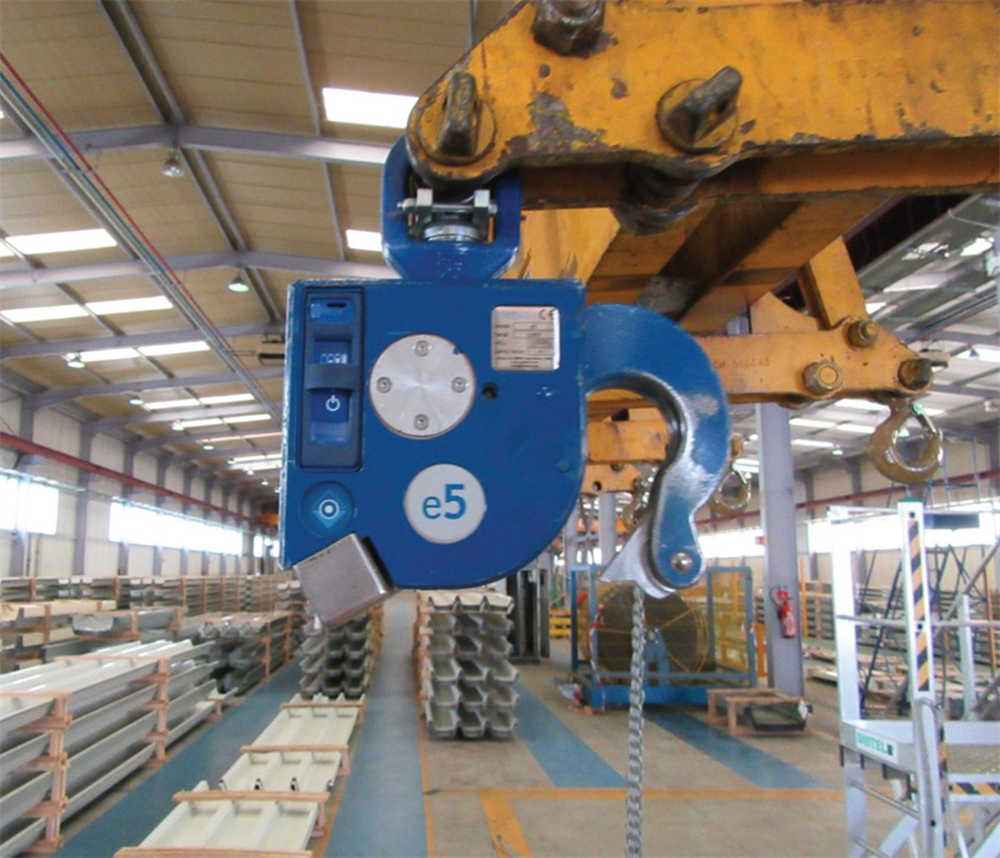The case that Dongqi Crane will introduce today is that a global supplier of construction systems and materials uses automatic hooks with overhead cranes to lift steel profiles at two locations in eastern France. The steel and mining giant’s construction arm produces a variety of building components including roofing sheets, cladding and laminate flooring at its factories. Safety is paramount throughout the entire manufacturing and material handling process.
When supplying bridge cranes and automatic hooks, crane suppliers need to comprehensively consider various factors such as the construction company’s needs, safety performance, quality assurance, and after-sales service to ensure that they provide high-quality products and services that meet the requirements.

Arnauld Clausse is the head of the Panneaux (team) in Zone 2 of the I construction site, responsible for the safety of the contrisson and Haironville construction sites, which are located in the eastern part of Paris and are approximately 30 minutes away by car. These facilities are conveniently located and can distribute products to France and neighboring European countries. Klaus said, “My mission is to continuously improve the safety of the site. Part of our operations is to load steel sections onto trucks for transportation. As part of our efforts to continuously improve best practices, we are seeking a method of connecting and dismantling lifting straps without human intervention.”
The company mainly purchases 5 tons of hooks, but also has 10 tons and 20 tons of equipment. The three hooks are usually located on one side of the eight pick-up point drilling rig suspended below the overhead crane. Each magnetic hook attracts and positions a sling connected to the opposite rigging point, and wraps it around a bundled profile weighing between 50 kilograms and 5 tons.
The most common practice is to use only two hooks at both ends of the load, but Klaus explains that the central hook is an important component of the drilling rig because when only one sling is needed, it can independently handle smaller loads.
He added, “In all material handling operations, hooks do not require personnel to work at heights or near loads. They do not need to climb onto loads to prepare elevators, nor do they need to climb onto truck trailers to disconnect rigging equipment. For example, the hazards associated with falls or getting stuck in hands have been eliminated from our operations, so these hooks will be installed in other locations throughout France.”
The construction company uses a remote control, which includes a full-color liquid crystal display (LCD) that can provide users with various information about lifting applications, including weight, hook status, and alerts to operators for overload or imbalance.
In the field of crane services, most customers need to develop customized crane solutions based on their actual working environment. This is clearly the same in the construction industry. From this case, we can notice that the most important reason for customers to use automatic hooks is safety, which is a method of connecting and dismantling lifting straps without manual intervention. When used in conjunction with bridge cranes, it maximizes safety and efficiency. Based on these contents, we can summarize some key points to pay attention to when designing crane solutions for construction companies:
Crane selection and configuration:
Security and reliability:
Materials and Quality:
Matching and debugging of automatic hooks:
Service and after-sales service:
Price and cost-effectiveness:
Regulations and standards:
Customized requirements:
Contact our crane specialists
Send us a message and we will get back to you as soon as possible.